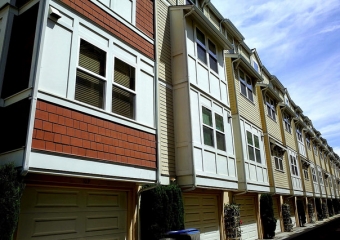

Photo by Travis Wise is licensed under CC BY 2.0
A recent California Supreme Court ruling could result in big changes for developers. Affordable housing has become one of the highest priorities for public officials, and California is only one of many states that now require developers to allocate some portion of new housing units to affordable housing units. In other words, some of the units must be priced below market rates.
In 2010, San Jose became the largest city in the nation to pass legislation that requires developers of 20 or more housing units to designate 15 percent of the units as affordable housing units. The law is known as an inclusionary housing ordinance and more than 170 California cities and counties have adopted such laws. Nationwide, that number is approximately 400.
California builders and associations to which they belong challenged the law, but the Supreme Court upheld it. The chief justice noted that the lack of affordable housing has reached “epic proportions.” Now, Los Angeles and other cities in the state will likely require developers to sell a percentage of new units at lower rates.
Currently, no city in Texas has an inclusionary housing program. In fact, Texas law prohibits an ordinance or regulation that sets a maximum sales price for new housing constructed by a private-sector developer. There is a question, however, about whether or not this applies to rental housing. And, the Texas law does allow municipalities to offer incentives if developers voluntarily allocate affordable housing units.
The City of New York’s Inclusionary Housing Program is unique in that it offers optional floor area bonuses for new residential developments. To qualify for an increase in the floor area of a building, a developer must make a certain percentage of the units available as affordable housing, or provide new or rehabilitated affordable housing units off-site in the same community district. The bonus floor area can be up to 33 percent.
Cambridge, Massachusetts, instituted an Inclusionary Zoning Ordinance and now the city has more than 450 units of affordable housing. The Cambridge program applies both to new residential developments as well as existing buildings that are converted to residential use. The program, like the one in New York, also offers floor area bonuses to developers.
In New Mexico, the city of Carlsbad requires 15 percent of total units built by housing developers to be offered as affordable housing. Since the city implemented the mandated ordinance, the result was about 2,000 new units of housing for low- and extremely low-income households.
Inclusionary zoning is judicially imposed in New Jersey and cities are required to use their zoning powers to help produce housing that is affordable to low- and moderate-income families. Montgomery County, Maryland, set the bar for the rest of the nation. Its inclusionary zoning program has resulted in the addition of more than 12,500 affordable housing units.
This is a trend worth noting. Affordable housing is now a top priority in almost every state in the country.
To find out more about these mandates, and to see how you can partner with local government on affordable housing projects contact one of our procurement consultants.
